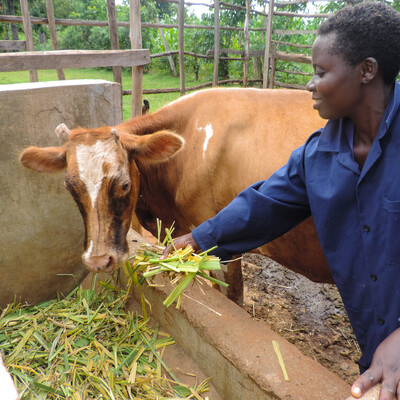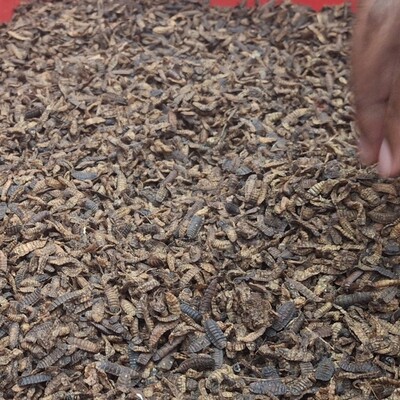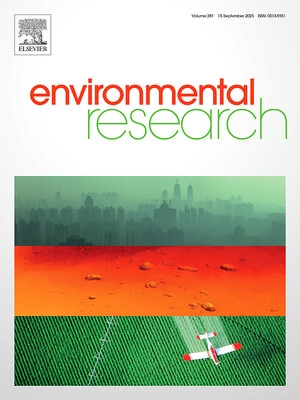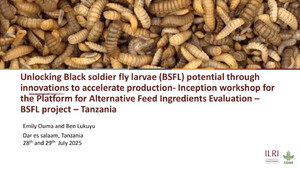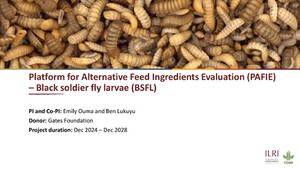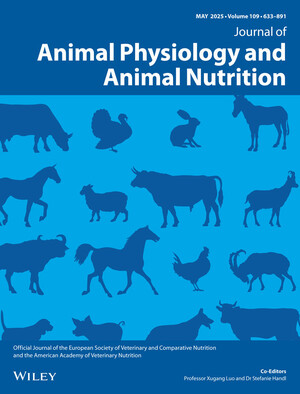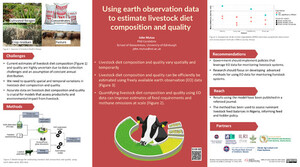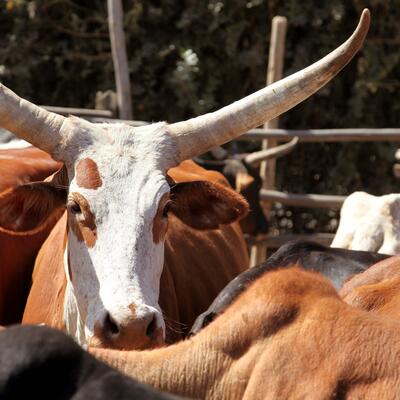
Fodder and feed in livestock value chains in Ethiopia – trends and prospects
The problem
Two main drivers are leading to changes in feeding practices in the Ethiopian livestock sector. First, growing urban populations and rising incomes are fuelling increased demand for livestock products such as milk and meat. Dairy value chains to supply urban markets with milk have long existed but are showing signs of more serious development (Duncan & Teufel 2010), for example in the Sululta area. Similarly there is a growing export trade in live animals focused around feed lots in the Rift Valley area especially around Mojo (Ethiopia Sanitary & Phytosanitary Standards and Livestock & Meat Marketing Program 2010). Small ruminant domestic trade is also significant particularly associated with holy days in the Ethiopian Orthodox Church and exports are also significant. Ongoing community sheep breeding programmes around Menz may provide opportunities for commercialization. More intensive production demands higher quality feed and a more reliable source of year-round nutrients leading to increased demand for agro-industrial by-products, planted forages and pasture hay. Second, rising human populations are placing increased pressure on grazing lands with much former pasture land being cultivated for cereal production to satisfy increasing demands for food production. This has led to ever greater scarcity of livestock feed, an increased use of crop residues for livestock feed and increasing reliance on purchased feed (which includes crop residues as well as more refined concentrates and supplements) to support livestock production.
Purpose and objectives
Objectives are:
- To develop value chain maps for feed-related elements of prominent dairy, beef and sheep value chains in Ethiopia and to gather indicative data on flows, volumes, prices of feeds and fodder associated with those value chains.
- To assess demand for and the price – quality relationships for feeds and fodder at different stages along the intensification continuum within study sites. Also to determine if / how feed quality messages are passing along the focal chains and if they are, what are the perceived and actual characteristics of better quality feeds that command premium prices?
- If there are feed quality price premiums, what are the impacts of the higher quality feeds on smallholder farmers in terms of livestock productivity and profits?
- To use the above information to allow future trends to be predicted and to support interventions to enhance smallholder-based feed supply and trade leading to more value, more employment and reduced margins and costs.
- To test and refine emerging tools for feed resource and demand assessment, value chain analysis, rapid market appraisal and feed technology prioritization for subsequent application in wider CGIAR Research Programme (and other) contexts.
- To assess broad potential implications of increased feed and fodder trade for soil health in source areas.
Outputs and deliverables
1. Refined tools for feed resource assessment, value chain analysis, rapid market appraisal and feed technology prioritization for subsequent application in wider CGIAR (and other) Research Programme contexts (Deliverable: Synthesis reports from each of 3 sites on application of FEAST and Techfit tools. By Jun 15, 2012)
2.
a. Targeted value chain assessment of feed elements of dairy, beef and sheep value chains (Deliverable: draft synthesis report delivered by Jun 15, 2012)
b. Data base of price, quality and volume data on a seasonal basis for key feeds associated with the target value chains. Indicative quantification of feed purchase/exchange by users, and determining factors (Deliverable: excel database (including some preliminary data summaries) of price, quality and volume information from the 3 study sites by Jun 15, 2012)
3. Synthesis of experiences with successful small ruminant feeding strategies from elsewhere with recommendations for how they could be modified for Ethiopia (Short report by May 15, 2012)
4. Assessment of feed availability and demand for small ruminant production in Menz area (short report by May 15, 2012)
5. Synthesis workshop (meeting report by June 30, 2012)
Approach and activities
The approach will involve a combination of primary data collection using survey instruments modified from other contexts along with review of secondary data. Proposed activities are:
1. Preliminary scoping of existing feed resources and options for feed upgrading using recently developed rapid assessment methods developed by ILRI, CIAT and partners. Specifically, the FEAST tool will be used to gather preliminary information on feed dimensions of the livestock production system for target value chains. The Techfit tool will be used to select priority feed enhancement strategies, modified to capture actual feed purchase/exchange. To be conducted by EIAR with backstopping by ILRI.
2. Targeted value chain analysis with focus on feed. An existing survey instrument developed as part of the East Africa Dairy Development Project will be modified and applied in Ethiopia. Livestock value chains around Sululta (dairy), Mojo (beef) and Menz (sheep) are likely to form the target value chains but this may be modified as part of a site selection exercise to ensure that these sites are representative of major domains of livestock production and feed sources/land-use systems in Ethiopia . The analyses will assess current sources of fodder and feed, volumes, distances, prices and types of feeds used and traded, the prices and values of the target livestock species and their products and the costs of labour and other inputs. To be conducted by ILRI with ACDI-VOCA.
3. Scoping study on the potential for enhanced feeding of small ruminants by looking at successful models in other countries and assessing their potential application in Ethiopia. To be conducted by ILRI.
4. Feed resource base assessment for emerging small ruminant value chains. This will involve refining tools developed in ILRI’s Hyderabad office and applying them in the Menz area to yield an inventory of existing and potential feed resources and a balance sheet on available and required feed resources for particular production goals. To be conducted by ILRI.
5. Project completion workshop to which wider interested stakeholders would be invited including from Gates-funded East Africa Dairy Development Project (Phase 2), the multi-donor Agricultural Growth Programme for Ethiopia and the CIDA-funded Livestock Value Chain Enhancement (LIVES) project.






